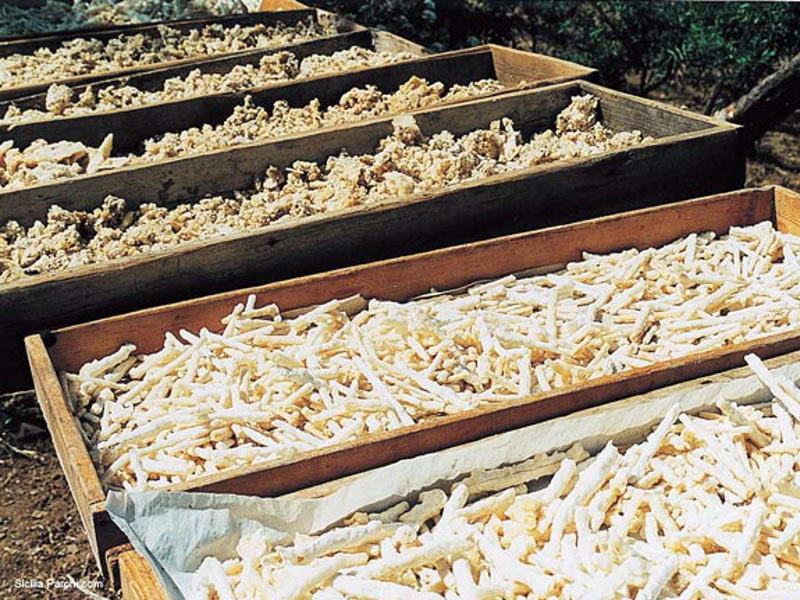Parco Naturale Regionale delle Madonie
www.parcodellemadonie.itMadonie Manna
The ash tree starts to produce when it is 6-8 years old, but not all the plants start producing at the same time. As a matter of fact, maturation depends not only on the plant variety, but also on the nature of the soil, the exposure, and the altitude. The beginning of the production season depends on the climate trend and the first engravings are practiced between the end of June and the first half of July when the leaves, because of the water shortage and the high temperatures, lose their usual brightness and are mat, wrinkled, and yellowish. The ash tree-farmer checks the ash tree ripening by cutting a bit of bark from the plant. If a drop comes out from the cut, the plant is ripe and the first engraving of the season is practiced. From the engravings, a violaceous and bitter liquid comes out: at the contact with air, it becomes sweet and forms a slight whitish crystal-like stratum: the manna. The liquid forms a whitish stalactite of various length, the so-called "cannòlo", which is the best part of the manna.







